Why is Greenbone not a security provider like any other? How did Greenbone come about and what impact does Greenbone’s long history have on the quality of its vulnerability scanners and the security of its customers? The new video “Demystify Greenbone” provides answers to these questions in an twelve-minute overview. It shows why experts need […]
Tag Archive for: Cyber-Sicherheit
Winter is coming: The motto of House Stark from the series “Game of Thrones” indicates the approach of an undefined disaster. One could also surmise something similar when reading many articles that are intended to set the mood for the upcoming NIS2 Implementation Act (NIS2UmsuCG). Is NIS2 a roller of ice and fire that will bury the entire European IT landscape and from which only those who attend one of the countless webinars and follow all the advice can save themselves?
NIS2 as such is merely a directive issued by the EU. It is intended to ensure the IT security of operators of important and critical infrastructures, which may not yet be optimal, and to increase cyber resilience. Based on this directive, the member states are now called upon to create a corresponding law that transposes this directive into national law.
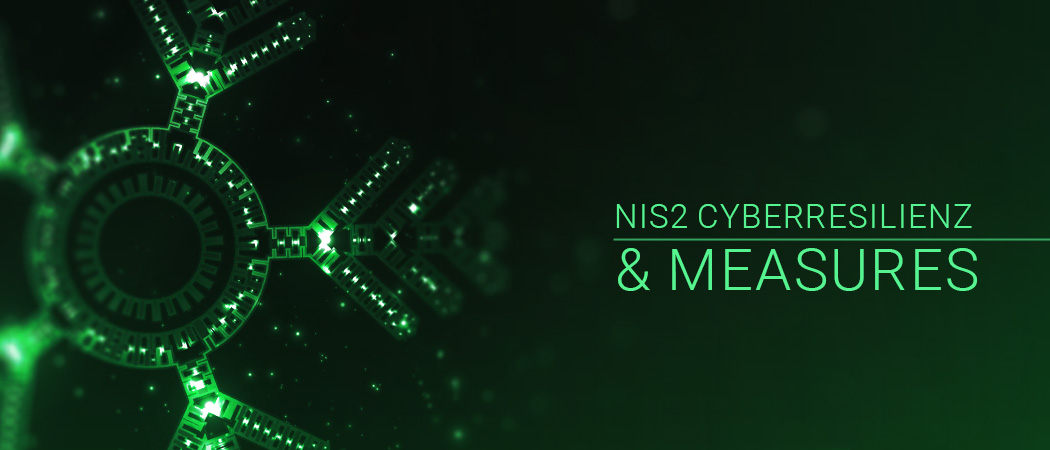
What is to be protected?
The NIS Directive was introduced by the EU back in 2016 to protect industries and service providers relevant to society from attacks in the cybersphere. This regulation contains binding requirements for the protection of IT structures in companies that operate as critical infrastructure (KRITIS) operators. These are companies that play an indispensable role within society because they operate in areas such as healthcare services, energy supply and transport. In other words, areas where deliberately caused disruptions or failures can lead to catastrophic situations – raise your hand if your household is equipped to survive a power outage lasting several days with all its consequences…
As digitalisation continues to advance, the EU had to create a follow-up regulation (NIS2), which on the one hand places stricter requirements on information security, but on the other hand also covers a larger group of companies that are “important” or “particularly important” for society. These companies are now required to fulfil certain standards in information security.
Although the NIS2 Directive was already adopted in December 2022, the member states have until 17 October 2024 to pass a corresponding implementing law. Germany will probably not make it by then. Nevertheless, there is no reason to sit back. The NIS2UmsuCG is coming, and with it increased demands on the IT security of many companies and institutions.
Who needs to act now?
Companies from four groups are affected. Firstly, there are the particularly important organisations with 250 or more employees or an annual turnover of 50 million euros and a balance sheet total of 43 million euros or more. A company that fulfils these criteria and is active in one of the following sectors: energy, transport, finance/insurance, health, water/sewage, IT and telecommunications or space is particularly important.
In addition, there are the important organisations with 50 or more employees or a turnover of 10 million euros and a balance sheet total of 10 million euros. If a company fulfils these criteria and is active in one of the following sectors: postal/courier, chemicals, research, manufacturing (medical/diagnostics, IT, electrical, optical, mechanical engineering, automotive/parts, vehicle construction), digital services (marketplaces, search engines, social networks), food (wholesale, production, processing) or waste disposal (waste management), it is considered important.
In addition to particularly important and important facilities, there are also critical facilities, which continue to be defined by the KRITIS methodology. Federal facilities are also regulated.
What needs to be done?
In concrete terms, this means that all affected companies and institutions, regardless of whether they are “particularly important” or “important”, must fulfil a series of requirements and obligations that leave little room for interpretation and must therefore be strictly observed. Action must be taken in the following areas:
Risk management
Affected companies are obliged to introduce comprehensive risk management. In addition to access control, multi-factor authentication and single sign-on (SSO), this also includes training and incident management as well as an ISMS and risk analyses. This also includes vulnerability management and the use of vulnerability and compliance scans.
Reporting obligations
All companies are obliged to report “significant security incidents”: these must be reported to the BSI reporting centre immediately, but within 24 hours at the latest. Further updates must be made within 72 hours and 30 days.
Registration
Companies are obliged to determine for themselves whether they are affected by the NIS2 legislation and to register themselves within a period of three months. Important: Nobody tells a company that it falls under the NIS2 regulation and must register. The responsibility lies solely with the individual companies and their directors.
Evidence
It is not enough to simply take the specified precautions; appropriate evidence must also be provided. Important and particularly important facilities will be inspected by the BSI on a random basis, and appropriate documentation must be submitted. KRITIS facilities will be inspected on a regular basis every three years.
Duty to inform
In future, it will no longer be possible to sweep security incidents under the carpet. The BSI will be authorised to issue instructions to inform customers about security incidents. The BSI will also be authorised to issue instructions on informing the public about security incidents.
Governance
Managing directors are obliged to approve risk management measures. Training on the topic will also become mandatory. Particularly serious: Managing directors are personally liable with their private assets for breaches of duty.
Sanctions
In the past, companies occasionally preferred to accept the vague possibility of a fine rather than making concrete investments in cyber security measures, as the fine seemed quite acceptable. NIS2 now counters this with new offences and in some cases drastically increased fines. This is further exacerbated by the personal liability of managing directors.
As can be seen, the expected NIS2 implementation law is a complex structure that covers many areas and whose requirements can rarely be covered by a single solution.
What measures should be taken as soon as possible?
Continuously scan your IT systems for vulnerabilities. This will uncover, prioritise and document security gaps as quickly as possible. Thanks to regular scans and detailed reports, you create the basis for documenting the development of the security of your IT infrastructure. At the same time, you fulfil your obligation to provide evidence and are well prepared in the event of an audit.
On request, experts can take over the complete operation of vulnerability management in your company. This also includes services such as web application pentesting, which specifically identifies vulnerabilities in web applications. This covers an important area in the NIS2 catalogue of requirements and fulfils the requirements of § 30 (risk management measures).
Conclusion
There is no single, all-encompassing measure that will immediately make you fully NIS2-compliant. Rather, there are a number of different measures that, taken together, provide a good basis. One component of this is vulnerability management with Greenbone. If you keep this in mind and put the right building blocks in place in good time, you will be on the safe side as an IT manager. And winter can come.
The IT-Grundschutz-Compendium of the Federal Office for Information Security (BSI) has, in recent years, provided clear guidelines for users of Microsoft Office. Since April 2024, Greenbone’s enterprise products have integrated tests to verify whether a company is implementing these instructions. The BSI guidelines are aligned with the Center for Internet Security (CIS) guidelines.
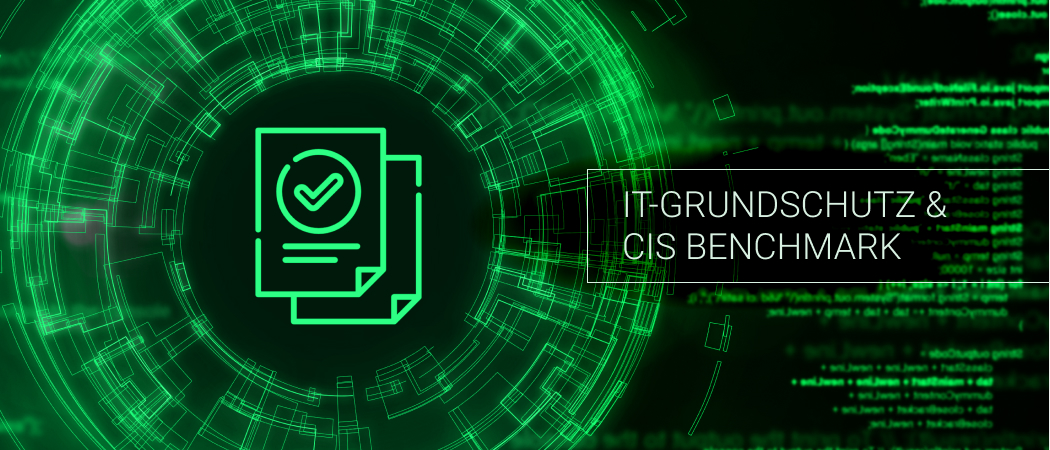
In the section “APP:Applications 1.1. Office Products” the BSI specifies the “requirements for the functionality of Office product components.” The goal is to protect the data processed and used by the Office software. While Microsoft Office is likely the primary reference due to its widespread market penetration, the model behind the BSI guidelines aims to apply to any office product “that is locally installed and used to view, edit, or create documents, excluding email applications.”
BSI Guidelines
The module explicitly builds on the requirements of the “APP.6 General Software” component and refers to the modules “APP.5.3 General Email Client,” “APP.4.3 Relational Databases,” and “OPS.2.2 Cloud Usage,” although it expressly does not consider these.
The BSI identifies three main threats to Office suites:
- Lack of customization of Office products to the institution’s needs
- Malicious content in Office documents
- Loss of integrity of Office documents
The components listed in the BSI IT-Grundschutz-Compendium include 16 points, some of which have since been removed. Greenbone has developed several hundred tests, primarily addressing five of the basic requirements, including “Secure opening of documents from external sources” (APP.1.1. A3) and “Use of encryption and digital signatures” listed in APP.1.1. A15. The BSI specifies:
“All documents obtained from external sources MUST be checked for malware before being opened. All file formats deemed problematic and all unnecessary within the institution MUST be banned. If possible, they SHOULD be blocked. Technical measures SHOULD enforce that documents from external sources are checked.”
Regarding encryption, it states: “Data with increased protection requirements SHOULD only be stored or transmitted in encrypted form. Before using an encryption method integrated into an Office product, it SHOULD be checked whether it offers sufficient protection. Additionally, a method SHOULD be used that allows macros and documents to be digitally signed.”
CIS Guidelines Enhance Basic Protection
In addition to the requirements listed in the BSI Basic Protection Manual, the CIS Benchmark from the Center for Internet Security (CIS) for Microsoft Office includes further and more specific suggestions for securing Microsoft products. The CIS guidelines are developed by a community of security experts and represent a consensus-based best practice collection for Microsoft Office.
As one of the first and only vulnerability management providers, Greenbone now offers tests on security-relevant features mentioned in the CIS guidelines, uniting CIS and BSI instructions in numerous, sometimes in-depth tests, such as on ActiveX Control Initialization in Microsoft Office. The Greenbone Vulnerability Management tests whether this switch is set to “enabled”, but also many other settings, for example, whether “Always prevent untrusted Microsoft Query files from opening” is set to “Enabled” among many others.
Many tests focus on external content, integrating macros, and whether and how these external contents are signed, verifiable, and thus trustworthy or not, and whether administrators have done their homework in configuring Microsoft Office. According to the BSI, one of the most significant threats (and the first mentioned) is the lack of adaptation of Office products to the reality and the business processes in the company. Greenbone’s new tests ensure efficient compliance with regulations, making it harder for attackers and malware to establish a foothold and cause damage in the company.
Save the date: The “German Congress for IT and Cyber Security in Government and Administration” (June 12 to 13, 2024) provides information on current trends, strategies and solutions in IT security.
In the main program: “IT support for early crisis detection” (Moderation: Dr. Eva-Charlotte Proll, Editor-in-Chief and Publisher, Behörden Spiegel).
Participants:
- Dr. Jan-Oliver Wagner, Chief Executive Officer Greenbone
- Carsten Meywirth, Head of the Cybercrime Division, Federal Criminal Police Office
- Generalmajor Dr. Michael Färber, Head of Planning and Digitization, Cyber & Information Space Command
- Katrin Giebel, Branch Manager, VITAKO Bundesverband kommunaler IT-Dienstleister e.V.
- Dr. Dirk Häger, Head of the Operational Cybersecurity Department, Federal Office for Information Security (BSI)
Where? Berlin, Hotel Adlon Kempinski, Unter den Linden 77
When? 13.06.2024; 9:40 a.m.
Vulnerabilities in IT systems are increasingly being exploited by malicious attackers. You can protect your IT systems with vulnerability management. Visit us in our lounge at stand 44 – we look forward to seeing you!
Registration: https://www.public-it-security.de/anmeldung/

After experts noticed a rapid increase in cyberattacks on local authorities and government agencies in 2023, the horror stories don’t stop in 2024. The pressure to act is enormous, as the EU’s NIS2 Directive will come into force in October and makes risk and vulnerability management mandatory.

“The threat level is higher than ever,” said Claudia Plattner, President of the German Federal Office for Information Security (BSI), at Bitkom in early March. The question is not whether an attack will be successful, but only when. The BSI’s annual reports, for example the most recent report from 2023, also speak volumes in this regard. However, according to Plattner, it is striking how often local authorities, hospitals and other public institutions are at the centre of attacks. There is “not a problem with measures but with implementation in companies and authorities”, said Plattner. One thing is clear: vulnerability management such as Greenbone’s can provide protection and help to avoid the worst.
US authorities infiltrated by Chinese hackers
In view of the numerous serious security incidents, vulnerability management is becoming more important every year. Almost 70 new security vulnerabilities have been added every day in recent months. Some of them opened the door to attackers deep inside US authorities, as reported in the Greenbone Enterprise Blog:
According to the media, US authorities have been infiltrated by Chinese hacker groups such as the probably state-sponsored “Volt Typhoon” for years via serious security gaps. The fact that Volt Typhoon and similar groups are a major problem was even confirmed by Microsoft itself in a blog back in May 2023. But that’s not all: German media reported that Volt Typhoon is taking advantage of the abundant vulnerabilities in VPN gateways and routers from FortiNet, Ivanti, Netgear, Citrix and Cisco. These are currently considered to be particularly vulnerable.
The fact that the quasi-monopolist in Office, groupware, operating systems and various cloud services also had to admit in 2023 that it had the master key for large parts of its Microsoft cloud let stolen destroyed trust in the Redmond software manufacturer in many places. Anyone who has this key doesn’t need a backdoor for Microsoft systems any longer. Chinese hackers are also suspected in this case.
Software manufacturers and suppliers
The supply chain for software manufacturers has been under particular scrutiny by manufacturers and users not only since log4j or the European Cyber Resilience Act. The recent example of the attack on the XZ compression algorithm in Linux also shows the vulnerability of manufacturers. In the case of the “#xzbackdoor”, a combination of pure coincidence and the activities of Andres Freund, a German developer of open source software for Microsoft with a strong focus on performance, prevented the worst from happening.
An abyss opened up here: It was only thanks to open source development and a joint effort by the community that it came to light that actors had been using changing fake names with various accounts for years with a high level of criminal energy and with methods that would otherwise be more likely to be used by secret services. With little or no user history, they used sophisticated social scams, exploited the notorious overload of operators and gained the trust of freelance developers. This enabled them to introduce malicious code into software almost unnoticed. In the end, it was only thanks to Freund’s interest in performance that the attack was discovered and the attempt to insert a backdoor into a tool failed.
US officials also see authorities and institutions as being particularly threatened in this case, even if the attack appears to be rather untargeted and designed for mass use. The issue is complex and far from over, let alone fully understood. One thing is certain: the usernames of the accounts used by the attackers were deliberately falsified. We will continue to report on this in the Greenbone blog.
European legislators react
Vulnerability management cannot prevent such attacks, but it provides indispensable services by proactively warning and alerting administrators as soon as such an attack becomes known – usually before an attacker has been able to compromise systems. In view of all the difficulties and dramatic incidents, it is not surprising that legislators have also recognised the magnitude of the problem and are declaring vulnerability management to be standard and best practice in more and more scenarios.
Laws and regulations such as the EU’s new NIS2 directive make the use of vulnerability management mandatory, including in the software supply chain. Even if NIS2 only actually applies to around 180,000 organisations and companies in the critical infrastructure (KRITIS) or “particularly important” or “significant” companies in Europe, the regulations are fundamentally sensible – and will be mandatory from October. The EU Commission emphasises that “operators of essential services” must “take appropriate security measures and inform the competent national authorities of serious incidents”. Important providers of digital services such as search engines, cloud computing services and online marketplaces must fulfil the security and notification requirements of the directive.”
Mandatory from October: A “minimum set of cyber security measures”
The “Directive on measures for a high common level of cybersecurity across the Union (NIS2)” forces companies in the European Union to “implement a benchmark of minimum cybersecurity measures”, including risk management, training, policies and procedures, also and especially in cooperation with software suppliers. In Germany, the federal states are to define the exact implementation of the NIS2 regulations.
Do you have any questions about NIS2, the Cyber Resilience Act (CRA), vulnerability management in general or the security incidents described? Write to us! We look forward to working with you to find the right compliance solution and give your IT infrastructure the protection it needs in the face of today’s serious attacks.
To make our ecological progress even more sustainable, we keep up to date with regular internal training courses on energy efficiency. In this way, we are helping to make the world even “greener” outside of Greenbone.
Two security vulnerabilities in Sharepoint – both from last year – are currently causing trouble for Sharepoint administrators. Because attackers are increasingly exploiting a combination of the two vulnerabilities, the Cybersecurity Infrastructure Security Agency CISA is now also issuing a warning. Affected customers of the Greenbone Enterprise Feed have been warned since June 2023.
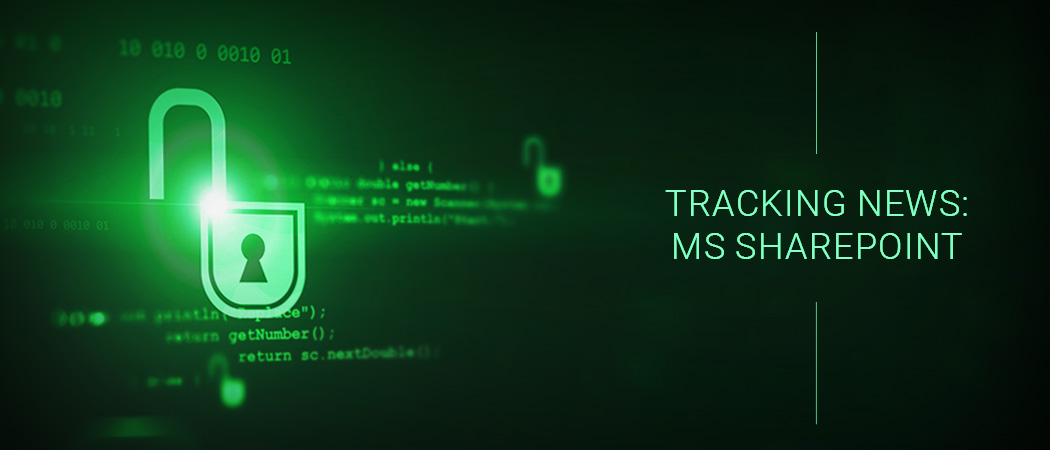
Remote Privilege Execution
The two vulnerabilities CVE-2023-29357 and CVE-2023-24955 together allow attackers to remotely gain administrator rights in a company’s SharePoint server. Details of the attack were published back in September 2023 at the Pwn2Own conference in Vancouver 2023 and can be found on the Singapore Starlabs blog, for example.
Massive attacks have now led to CISA recently issuing a warning about these vulnerabilities and including CVE-2023-29357 in its catalog of known exploited vulnerabilities. However, Greenbone has already had authenticated version checks for both CVEs since around June 2023 and an active check for CVE-2023-29357 since October 2023. Customers of the enterprise products have been receiving these CVEs as a threat for several months – in authenticated and unauthenticated scan mode.
Microsoft advises its customers on its website to update to the SharePoint Server 2019 version of June 13, 2023, (KB5002402), which fixes five critical vulnerabilities, including the first CVE mentioned by CISA. Furthermore, all administrators should install the antivirus software AMSI and activate Microsoft Defender in the SharePoint server. Otherwise, attackers could bypass authentication with fake authentication tokens and gain administrator rights.
Recognising and detecting vulnerabilities in the company at an early stage is important, as the many reports of damaging vulnerabilities show. Greenbone products can take on a lot of work here and ensure security – as a hardware- or as a virtual appliance. The Greenbone Enterprise Feed, which feeds all Greenbone security products, receives daily updates and therefore covers a high percentage of risks.
5 Known Juniper Junos Vulnerabilities Being Actively Exploited
CISA has added 5 CVEs relating to Juniper Junos (aka Junos OS), to its Known Exploited Vulnerabilities (KEV) catalog. The full exploit chain involves combining several lower-severity CVEs to achieve pre-authentication remote code execution (RCE). The 5 CVEs range in severity from CVSS 9.8 Critical to CVSS 5.3 Medium. Greenbone is equipped with vulnerability tests to identify affected systems.
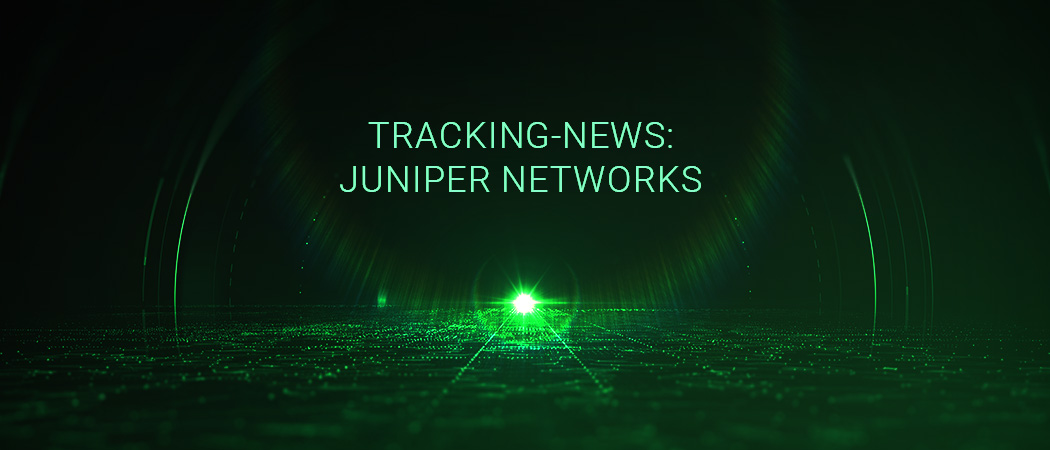
Understanding the timeline of events should help network defenders grasp how rapidly cyber threats can escalate. In this case a proof-of-concept (PoC) was published just 8 days after the vendor Juniper released its security advisory. Security researchers observed active exploitation just 12 days after the disclosure. Still, it was not until several months later that CISA acknowledged active exploitation. Greenbone Enterprise vulnerability feed added detection tests [1][2] for all impacted versions of the two affected product lines (EX Series Series Ethernet Switches and SRX Series Series Services Gateways) on August 18, 2023, immediately after they were disclosed.
- August 17th, 2023: Juniper released a security advisory for multiple vulnerabilities in Junos OS
- August 18th, 2023: Greenbone added detection tests [1][2] to our Enterprise vulnerability feed
- August 25th, 2023: Proof-of-concept (PoC) exploit code and a full vulnerability assessment were published by watchTowr Labs
- August 29th, 2023: Cyber threat alliance Shadowserver reported observing active exploitation in the wild
- August 31, 2023: Rapid7 threat research reported observing active exploitation in the wild
- October 2, 2023: A new PoC sample was released that does not require file upload
- November 13th, 2023: CISA adds 5 CVEs impacting Juniper Junos to its KEV catalog and set a deadline of November 17, 2023 for government systems to be patched
Here is a brief description of each CVE:
- CVE-2023-36844 (CVSS 5.3 Medium): A PHP External Variable Modification [CWE-473] vulnerability exists in J-Web, a tool used for remote configuration and management of Junos OS. The vulnerability allows an unauthenticated, network-based attacker to modify sensitive PHP environment variables. CVE-2023-36844 allows chaining to other vulnerabilities that lead to unauthenticated RCE.
- CVE-2023-36845 (CVSS 9.8 Critical): A PHP External Variable Modification vulnerability [CWE-473] in J-Web allows an unauthenticated, network-based attacker to remotely execute code. Using a crafted request that sets the variable PHPRC an attacker is able to modify the PHP execution environment to inject and execute code.
- CVE-2023-36846 (CVSS 5.3 Medium): A Missing Authentication for Critical Function [CWE-306] vulnerability in Juniper Networks Junos OS allows an unauthenticated, network-based attacker to impact file system integrity with a specific request to user.php via J-Web. Without authentication, an attacker is able to upload arbitrary files [CWE-434] which allows chaining to other vulnerabilities including unauthenticated RCE.
- CVE-2023-36847 (CVSS 5.3 Medium): A Missing Authentication for Critical Function [CWE-306] vulnerability in Juniper Networks Junos OS allows an unauthenticated, network-based attacker to impact file system integrity. With a malicious request to installAppPackage.php via J-Web an attacker is able to upload arbitrary files [CWE-434] without authentication, which may allow chaining to other vulnerabilities that lead to RCE.
- CVE-2023-36851 (CVSS 5.3 Medium): A Missing Authentication for Critical Function [CWE-306] vulnerability in Juniper Networks Junos OS allows an unauthenticated, network-based attacker to impact file system integrity. With a specific request to webauth_operation.php that doesn’t require authentication, an attacker is able to upload arbitrary files via J-Web [CWE-434], leading to a loss of integrity for a certain part of the file system and chaining to other vulnerabilities.
Understanding The Attack Trajectory
Several of the CVEs listed above are classified as Missing Authentication for Critical Function [CWE-306] vulnerabilities meaning that various functions of the J-Web device management web application do not implement proper authentication checks.
Here is a summary of how these vulnerabilities were chained together for unauthenticated RCE:
The J-Web application is written in PHP which, as the watchTowr researchers noted, is known for its usability at the cost of security. In the case of CVE-2023-36846, J-web’s `webauth_operation.php` file implemented a different method for authentication than the rest of the application. This file instead invokes the `sajax_handle_client_request()` function and submits the value of ‘false’ as the `doauth` parameter, resulting in no authentication being performed. The aforementioned `sajax_handle_client_request()` function is designed to execute J-web’s built-in functions by specifying them as a $_POST variable, including the `do_upload()` function, used to upload files.
CVE-2023-36845 is a vulnerability in the Junos web server that allows system environment variables to be set via the `name` field of an HTTP POST request when a`Content-Type: multipart/form-data` header is used. Two exploits matching the description of CVE-2023-36845 were previously disclosed for the GoAhead IoT web server and tracked as CVE-2017-17562 and CVE-2021-42342, indicating that the Junos web server likely implements the GoAhead proprietary web-server.
Executing the uploaded file is possible by setting the PHPRC environment variable, using it to load an unauthorized PHP configuration `php.ini` file also uploaded via CVE-2023-36846 that contains a malicious `auto_prepend_file` setting directing PHP to execute the first uploaded file every time a page is loaded. Here is the complete example chain
Mitigation Of Recent Juniper Junos Vulnerabilities
The 5 new CVEs affect Juniper Networks Junos OS on EX Series Series Ethernet Switches and SRX Series Series Services Gateways. Specifically Junos OS version 20.4 and prior, 21.1, 21.2, 21.3, 21.4, 22.1, 22.2, 22.3, 22.4 and 23.2 on the EX and SRX Series appliances.
The best mitigation option is to install the security patches to Junos OS. If you cannot install the official provided security patches, completely disabling the J-Web interface, or configuring firewalls with an accept list to restrict access to only trusted hosts can prevent exploitation. In general, strictly limiting access to critical servers and network appliances to only client IP addresses that require access can prevent exploitation of similar yet undiscovered remotely exploitable zero-day vulnerabilities.
We at Greenbone are excited to introduce the innovative Greenbone SMP-Bund-Portal in collaboration with the Federal Office for Information Security (BSI). As a leading provider of IT security solutions, we are proud to offer this platform specifically tailored to the needs of federal agencies.

A Portal Setting Standards
The Greenbone SMP-Bund-Portal is the central point of contact for IT security and vulnerability management. It has been developed to provide agencies with concrete support in addressing current IT security challenges.
Many Advantages for Federal Agencies
- Easy-to-Understand Insights: The portal offers clear and user-friendly information about vulnerability management. It is ideal for both beginners and experts in IT security.
- Exclusive Framework Contract Conditions: Federal agencies enjoy special offers and benefits. The obligation to issue public tenders is eliminated, saving time and resources.
- Personal Support: Our competent support team is always at our customers’ side to answer questions and ensure support.
- Direct Access to the Agency Sales Team: Expert advice from our team, which is well-versed in the specific requirements of federal agencies. We look forward to furthering our trusted collaboration with the BSI and are available for any questions.
- Opportunity for Exchange: Use the shared forum to share your experiences and questions.
https://smp-bund.greenbone.net/
International panel discussion on effective cybersecurity at #OSXP2023
At the esteemed #OSXP2023 event, that took place in Paris, our participation in the “Cybersécurité et open source” roundtable brought forward critical discussions on improving cybersecurity in companies. The panel, including distinguished experts from the academic and governmental sectors, delved into strategies and points of vigilance essential for robust cybersecurity.
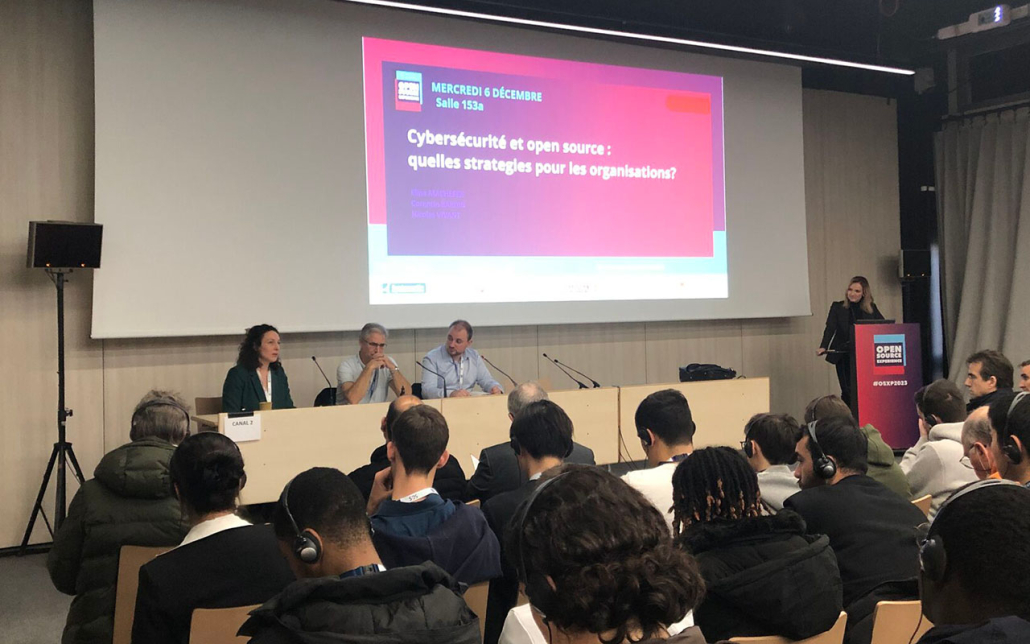
1. The Mindset of Security
Security by Design: A Leadership Commitment
- The panel emphasized the importance of incorporating security from the initial stages of development. This approach requires a commitment from the top management to prioritize security in all business operations.
A Mentality Focused on Secure and Protected Solutions
- Companies must cultivate a culture where security is an integral part of the thinking process, aiming to deliver solutions that are inherently secure and protected.
2. Implementing Key Processes
Adherence to Standards and Automation
- The importance of adhering to established cybersecurity standards was underscored, with a recommendation to automate processes wherever possible to ensure consistency and efficiency.
No Deployment Without Security Compliance
- It was strongly advised that no deployments or actions should proceed without meeting the necessary security requirements.
3. Resources: Empowering Teams and Enhancing Vigilance
Dedicated Security Teams and Training
- Having specialized security teams and conducting regular training sessions were identified as crucial for maintaining a high level of security awareness and preparedness.
Vigilance as a Continuous Effort
- Continuous vigilance was highlighted as a key resource, ensuring that security measures are always up-to-date and effective.
4. Essential Tools and Technologies
Mandatory Multi-Factor Authentication (MFA)
- Implementing MFA as a compulsory measure we recommend enhancing account security significantly.
Vulnerability Scanners and Dependance Management
- Utilizing vulnerability scanners and managing dependencies and configurations were suggested as vital tools. While platforms like GitHub Enterprise may be costly, they offer comprehensive solutions for these needs.
Conclusion: Education, Awareness, and the Use of Open-Source Tools
In conclusion, the panel at #OSXP2023, including our expert Corentin Bardin, a cyber security specialist and pen tester, highlighted the importance of continuous education and staying updated in the rapidly evolving cybersecurity landscape. They advocated for the use of open-source tools to bolster security measures.
The key takeaway from the discussion is the commitment to offering secure services. It’s not just about the tools and processes; it’s about the mindset and ongoing effort to stay vigilant and informed.
Update from 2023-12-06:
Last week, we reported on pro-Russian hacktivists scanning for vulnerable SharePoint Servers to exploit a critical vulnerability (CVE-2023-29357).
New findings suggest that the group, calling themselves “Zarya”, is undertaking various exploit-attempts, including directory traversal and targeting specific vulnerabilities in systems such as OpenWRT-Routers. The IP address 212.113.106.100, associated with these activities, has been observed in several different exploit attempts. In addition to simple reconnaissance, specific attacks on configuration files and Admin-APIs have been detected. This case re-emphasizes the importance of securing systems against such threats and shows, how unprotected or poorly configured systems can become targets of such attacks.
A critical vulnerability for Sharepoint (CVE-2023-29357), is being targeted by presumably pro-Russian attackers who are trying to exploit this vulnerability.

The Internet Storm Center has discovered corresponding activity on its honeypots. The severity for this vulnerability is critical (a score of 9.8 out of 10), and the attack complexity is very low, making this vulnerability particularly dangerous. Greenbone customers can benefit from the automatic detection of this vulnerability in our Enterprise Feed. Microsoft offers a security update since June 12, 2023, Microsoft customers who missed the update should install it now.



